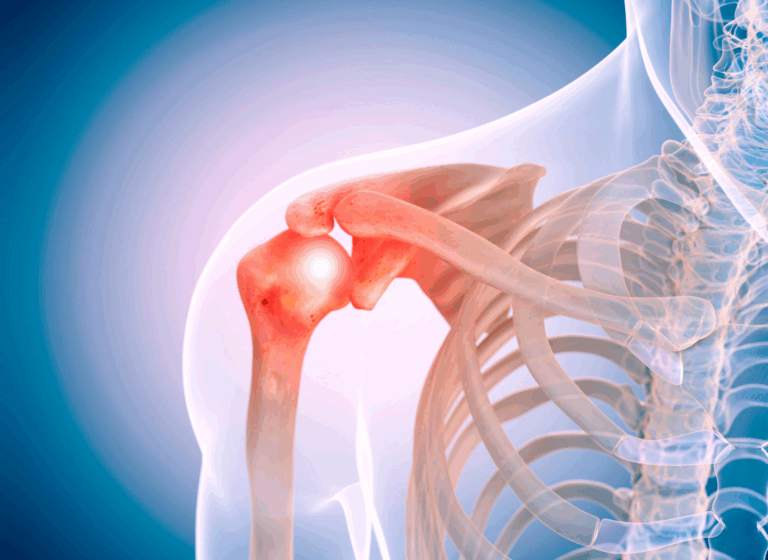
About Pain in Hypophosphatasia (HPP)
Pain is a common symptom of hypophosphatasia (HPP ). Patients are at increased risk for muscle and joint pain as a result of fractures and inflammation, as well as dental pain. Treatment can also cause pain at the injection site.
Few studies have examined pain in HPP in depth, but a recent study that looked at the burden of illness in HPP demonstrated a link between mild to moderate disability and moderate pain in adults with HPP. Given how commonly it occurs and impacts patients, pain is an important component of HPP progression, and pain management should be a component of any treatment plan for patients.
 Impact of Chronic Pain
Impact of Chronic Pain
Pain affects people in vastly different ways, and people can have different tolerances or sensitivities to pain. Pain can impact both emotional and physical health, so it’s important to identify therapies and strategies for managing pain in HPP aimed at improving physical functioning and identifying effective coping strategies. Pain can have multiple components, including:

Emotional
Pain causes discomfort as a physical sensation, but it can also impact emotional health and well-being. Chronic pain can lead to depression, anger, frustration, anxiety, and resentment. People may avoid social interactions or activity, even though these can help improve pain. Stress and depression can trigger muscle tension or spasms and make pain worse.

Functional
Chronic pain can be disabling, and it is one of the most common reasons why people go on long-term disability. According to the Centers for Disease Control and Prevention, people with disabilities may have less access to quality healthcare and be at higher risk for other health problems. Fatigue is often reported by people with chronic pain, further impacting physical functioning and well-being.

Socio-Economic
Chronic pain is associated with high direct and indirect medical costs and there is a significant socio-economic burden of pain. People with chronic pain use more healthcare resources and generally have less earning power because of disability-related work absences. Some may struggle financially as a result.
To treat pain effectively, you and your physician must address all of the components of pain, especially if pain is persistent and interferes with your physical and emotional health.
 Pain Management Strategies
Pain Management Strategies
Treating chronic pain can be difficult, frustrating, and time-consuming. It’s important to remember that there are ways to mitigate the impact of pain on a day-to-day basis in order to feel better. Keep in mind that a mix of different approaches and consistent adherence will usually be needed to lessen and control your pain, cope with emotional distress, and minimize the impact of pain on daily life. Don’t give up. Talk to your doctor, explore different options, seek referrals, and work to identify the best ways to manage and cope with your pain. Reach out to info@SoftBones.org if you need additional information or support.
 Medical Treatments
Medical Treatments
A number of pharmacological treatments are available to treat pain in over-the-counter and prescription formulations. These should always be used as one component of pain treatment, along with other treatments such as physical therapy, massage, and nutrition counseling. Your healthcare provider will start with the lowest dose possible, then increase the dose over time, to ensure the medications are safely administered with the least risk of side effects as possible.
NSAIDs
Non-steroidal anti-inflammatory drugs (NSAIDs) include aspirin, ibuprofen, and naproxen.
NSAIDs block the production of chemicals in the body that cause inflammation and are effective for relieving pain and inflammation associated with joint and muscle diseases and injuries. However, these are best for short-term or as-needed use, because NSAIDs are associated with risks in people with heart problems, and can have other side effects such as gastrointestinal issues (e.g., nausea, heartburn, gastritis) and result in damage to the kidneys.
Antidepressants
Several different classes of antidepressant medications are effective in reducing pain and pain severity associated with bone and muscular pain. Because of the connection between depression and pain, it appears that reducing depression can also help reduce pain. Healthcare providers caution that rather than eliminating pain, antidepressants reduce its severity so people can tolerate pain better. In effect, antidepressants “turn the volume down” on pain.
Anticonvulsants
Anticonvulsant or anti-seizure medications have been shown to be effective at reducing neuropathy and some types of muscular pain. If you take these, your doctor will need to monitor you periodically for side effects, which can include liver damage, nausea, vomiting, swelling in the feet and legs, and drowsiness.
 Other Medical Treatments
Other Medical Treatments
Prescription muscle relaxants and opioids, and medical marijuana (where legal), are options for pain relief, but these treatments must be used with caution. Muscle relaxant medications can reduce muscle spasms and are widely accepted to be effective for reducing chronic musculoskeletal pain in conjunction with other therapies.
Medical marijuana has not been studied in HPP. Although there is some early evidence that supports its use in chronic pain, larger, randomized studies will need to be conducted to better understand if it can be recommended for individuals with HPP. Due to the opioid epidemic and the widespread misuse of opioids, these medications are typically restricted to treat moderate to severe pain, and they must always be prescribed under the direct supervision of a trained healthcare professional.

 Complementary Therapies
Complementary Therapies
Complementary strategies such as movement therapy, stretching, yoga, and meditation, along with approaches such as chiropractic treatment and acupuncture, can effectively empower patients to manage pain and improve outcomes. Therapeutic yoga, for example, uses gentle stretching to strengthen muscles without additional strain on the body. The focus is on pain management and improving overall well-being.
Other relaxation techniques can help reduce stress and control pain that interferes with sleep and daily functioning. These approaches are often underappreciated as essential components of maintaining physical functioning. Ask your healthcare provider about complementary therapies to determine what approaches fit into your treatment plan.
Set physical activity goals that are achievable daily. Remember, there are a variety of ways to stay active, and low-impact activities such as walking and swimming can help you stay healthy with less stress on joints. Pick activities you enjoy. Identify relaxing activities such as yoga, stretching, and meditation in lieu of strenuous activities if you are more likely to engage in these types of activities more consistently.
 Other Treatments
Other Treatments
Sleep Hygiene: Sleep disturbances typically go hand in hand with pain. Practice good sleep hygiene. Go to bed at the same time every night, reduce the use of electronics (TV, devices) before bed, and reduce caffeine and alcohol consumption, which can interfere with sleep and sleep quality.
Counseling & Cognitive Therapy: Individual or group counseling and other forms of psychological treatment can help patients learn relaxation techniques and lifestyle modifications and build self-management skills to address anxiety and depression. Understanding emotions and their impact on pain, sleep hygiene, and nutrition is important in developing coping skills and not letting pain overtake your life.
Christopher M. Sobey, MD
Associate Professor, of Clinical Anesthesiology and Pain Medicine,
Vanderbilt University Medical Center

